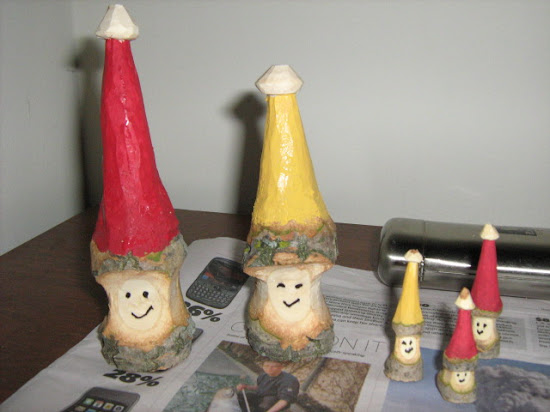In my country when a local goes into the woods he brings a gulok, not a knife. A gulok closely resembles a machete but is a lot thicker. It is used for clearing bushes, cutting firewood, digging, butchering animals, woodwork almost everything. So it's not surprising that the very first blade I bought when I came to settle in the USA is a machete.

Ontario 12" machete.

I use the machete for woodwork, such as splitting wood for one. I know other bushcrafters use an ax, but all my life I've been using a gulok. Maybe if I have an ax, I will use it instead.

The machete is used to chop lechon. Lechon is a roasted pig and is ever present in most Filipino celebrations.
I read a lot of articles about bushcraft and most recommends a knife for survival tool. Of course what blade you carry largely depends upon where you are going. Back home a large blade like a machete is highly recommended. But in my present environment, I agree that a knife is more appropriate. I had no choice but to look for a knife, and that wasn't easy. Too many knives to choose from but quite frankly because of budgetary constraints, I opted to the affordable Moras.

Mora 840mg Carbon Clipper 3 7/8" blade .079" thick.I have Mora Craftsman Triflex Carbon Blade Knife 780 and the Mora 510 but I like the Clipper the most. The length and width of the blade is just right for me and the handle with rubber no-slip grip is just great.

I split a small branch of wood with my knife by batoning.

For woodcarving, I use the Mora Laminated Carving Model 120 above. Very sharp 2 1/4" blade and birch handle. One knife I wanted to acquire is the red handled Mora Viking 640. But my recent check with Ragweedforge website it is out of stock and the product is discontinued. I should have not dilly-dallied and bought it several months ago.These Moras I ordered online from Bensbackwoods. Order arrives fast, highly recommended. Below are the other knives I use when my main knife cannot do the chore at hand.

SAK Hiker. I like the Hiker mainly because of the saw, good for cutting small branches when I'm woodcarving or whittling.

And last but not the least, Sheefield multi-tool. Cheap but dependable, I have been using this for more than 10 years now. Some knives are for collecting and some knives are for using. These are the knives I use around the house, and carry with me when I go hiking, biking or camping.
That's all folks!. Thanks for reading.
I promised in my previous post that I will be showing you my possibles pouch. So here it is:


I carry my possibles pouch, together with my PSK, when I go hiking or biking on trails, when I'm out into the woods for a day or when I go for a long drive.
I googled for the definition of a possibles pouch and this is what I got: A “Possibles Pouch” is possibly, “Whatever you want to carry in it”. I don't know if that is an accurate definition or not, but its good enough for me. Therefore, these are what I want to carry in my possibles pouch.

From left to right:
1. Bic lighter
2. Petroleum jelly coated cotton balls
3. Magnesium and flint fire starter.
4. Compass
5. Heavy-duty garbage bags, safety pins, band-aids, rubber bands and duct tape.
6. SAK Hiker
7. LED flashlight
8. String
SAK Hiker.

I chose this knife because it has a long saw that is good for cutting small branches and the price is just right for me.
With these, I've about covered everything, except for the fishing kit which I wanted to make.
Fire: Bic lighter, magnesium and flint fire starter and the ferrocerium rod in my PSK.
Shelter: 2 heavy-duty garbage bags, 2 knives.
Food: Improvised fishing kit using safety pins and string.
Navigation and signaling: 2 compass, 1 whistle, 2 flashlights
First-Aid: Band-aid, duct tape.
Repair: Safety pins, duct tape.
Of course I carry other items such as water, food and extra clothing in my pack but in this post, I am focusing only on my possibles pouch and its contents. I know through time, what I carry in my possibles pouch may change.
That is very possible!
That's all folks! Thanks for reading.




































